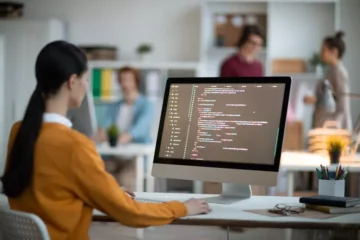Whats The Distinction Between Vector And Raster Images?
Why Do I Have Bruises After Drinking?
September 26, 2022money Known places that exchange 500 euros notes Travel Stack Exchange
September 27, 2022Raster and vector are basically different image formats, and getting them to look alike simply is not going to work more often than not. You will have higher outcomes when the source raster picture is already made up of straightforward strains and shade. You can choose between vector and raster graphics as per your individual needs of a design project. Vector graphics are great when accuracy and scalability are crucial. Producing logos, vector icons, and pictures are widespread vector uses.

Pixels Vs Vectors
Vector drawings are simply scalable, with no higher or bottom scaling limits. It always appears easy, no matter how huge you make it or how close you zoom in. The principal benefit of vector graphics is that they produce the most exact, clearest designs at any scale. The main disadvantages are that vector graphics demand skilled design software and the ability to use it. For an expert design profession, mastering each formats will present you with larger flexibility and creativity. To perceive the variations between raster and vector graphics, let’s examine their key features better.
What Are Vector Picture Formats?
Adobe Illustrator and CorelDraw are the most well-liked vector graphics editors. Raster graphics are most well-liked in eventualities where element and colour depth are crucial. For instance, raster pictures are essentially the most used possibility in digital pictures. The capability to capture complicated colours and particulars makes raster the go-to format for photographers. Raster graphics are extra suitable for tasks that embody photographic data, intricate details, and sensible textures.
What Are Raster Images?
As the name suggests, raster graphics comprise a grid of pixels like a checkerboard. Each tiny square pixel encodes brightness and colour values that mix to recreate scenes. Raster graphics, also identified as bitmap photographs, are made up of pixels—tiny squares of color arranged in a grid. Aside from offering flexibility by way of scalability, vector graphics additionally present ease in duplication. This makes them excellent for companies looking to create material such as logos, brochures, merchandise, and so on. The pc simply recalculates the equations every time the size or position modifications.
We use algorithms that compress photographs to assist scale back these file sizes. Image codecs like jpeg and gif are frequent compressed picture codecs. Scaling down these photographs is simple however enlarging a bitmap makes it pixelated or just blurred. Hence for pictures that need to scale to totally different sizes, we use vector graphics. One of the principle differences between raster and vector files is their decision.
Zoom in on a raster image to view the information it contains – information on the color of each pixel. Zoom out, and the pixels seem to mix flawlessly to kind an image. On the other hand, allows you to view the smooth types and curves of the image’s parts somewhat than individual pixels. Vector images are scalable, so one version of a design will always work for every iteration of a project. However, vector images can’t show images in a natural looking way, and vector formats are not as properly supported online as are raster formats. No, Adobe Photoshop is a raster-based program, meaning it uses pixels to create detailed images.
- Vector graphics are created using mathematical equations to outline points, lines, curves, and shapes.
- Simply erase or change the colour of individual pixels until you achieve the impact you’re in search of.
- We’ll break down vector vs. raster graphics, explaining their differences, perfect use cases, and benefits that will assist you make knowledgeable design choices.
- Using vectors in a raster-intended design is permissible as a end result of the whole image can simply be exported as a raster file.
- If you zoom in or broaden the dimensions of a raster picture, you start to see the individual pixels.
They excel at digital photography, image editing, and creating visually rich and textured artwork. When extending raster photographs, however, there is a have to care for sustaining image quality. For this purpose vector graphics are good for logos and different projects that need to remain sharp at multiple sizes.

Vector graphics stand out for his or her scalability and effectivity, making them indispensable in particular design scenarios. Their use extends across varied applications, from branding supplies like logos and icons to complicated illustrations and typography. The core benefit of vector graphics lies of their capability to take care of crispness and readability at any dimension. This scalability ensures that a emblem, for example, appears just as sharp on a enterprise card because it does on a billboard, with none need for a number of file versions.
Raster graphics are made up of pixels, which are tiny dots that carry certain shade information, and, combined together, they kind a complete picture. Vectors, in the meantime, have math as their constructing blocks and, consequently, do not provide the kind of nuance that rasters do. Vector files work higher for digital illustrations, complex graphics, and logos.

The resolution of a raster file is referred to in DPI (dots per inch) or PPI (pixels per inch). If you zoom in or broaden the dimensions of a raster picture, you start to difference between raster graphics and vector graphics see the person pixels. Vector and raster photographs differ of their resolution, the amount of detail they comprise, and where they’re used. Each raster and vector images have their own benefits and downfalls relying on the project at hand. Raster graphics, also identified as bitmap images, are composed of pixels—tiny squares of shade organized in a grid.
These graphics serve as the foundation for images, digital paintings, and detailed designs. These designs capture the colourful https://deveducation.com/, delicate nuances of our surroundings. Raster graphics have a grid of individual pixels which are precisely coloured to make a coherent image.
